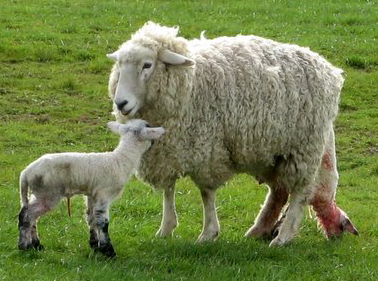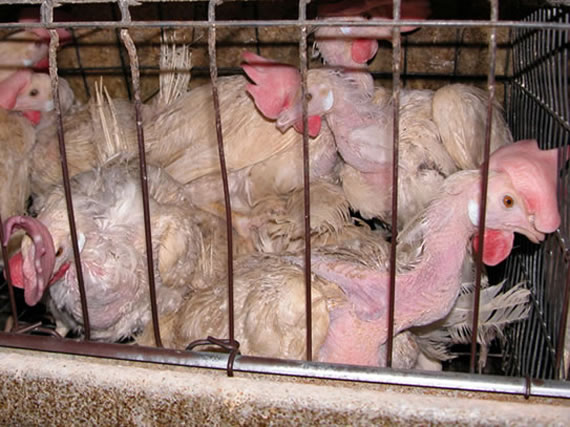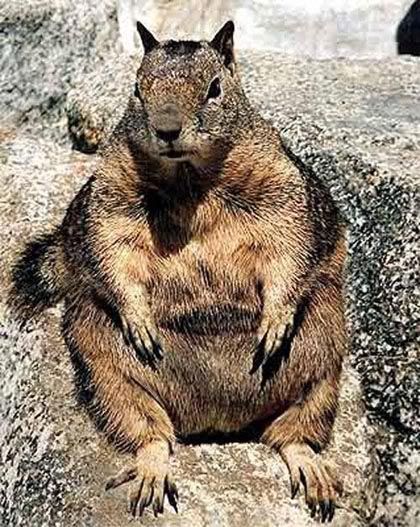Domestic Animals Biography
Source Link Goggle.com.pkDomestication (from Latin domesticus: "of the home") is the process whereby a population of living organisms is changed at the genetic level, through generations of selective breeding, to accentuate traits that ultimately benefit the interests of humans.[1] A usual by-product of domestication is the creation of a dependency in the domesticated organisms, so that they lose their ability to live in the wild.[2] This differs from taming in that a change in the phenotypical expression and genotype of the animal occurs, whereas taming is simply an environmental socialization/behavioral trait; the process by which animals become accustomed to human presence. In the Convention on Biological Diversity, a domesticated species is defined as a "species in which the evolutionary process has been influenced by humans to meet their needs."[3] Therefore, a defining characteristic of domestication is artificial selection by humans. Humans have brought these populations under their control and care for a wide range of reasons: to produce food or valuable commodities (such as wool, cotton, or silk) and for types of work (such as transportation, protection, warfare), scientific research, or simply to enjoy as companions or Plants domesticated primarily for aesthetic enjoyment in and around the home are usually called house plants or ornamentals, while those domesticated for large-scale food production are generally called crops. A distinction can be made between those domesticated plants that have been deliberately altered or selected for special desirable characteristics (see cultigen) and those plants that are used for human benefit, but are essentially no different from the wild populations of the species. Animals domesticated for home companionship are usually called pets, while those domesticated for food or work are called livestock or farm animals.Charles Darwin was the first to describe how domestication, selection and evolution are interlinked, and based on natural heritable variation among individual plants and animals. [4] Both have been described from human perspective as processes of artificial selection. Today we know that such natural variation is caused by mutations in genes coding for these traits, and by new combinations of already existing genetic variation, based on earlier mutations. Darwin described how the process of domestication can involve both unconscious and methodical elements. Routine human interactions with animals and plants create selection pressures that cause adaptation to human presence, use or cultivation. Deliberate selective breeding has also been used to create desired changes, often after initial domestication. These two forces, unconscious natural selection and methodical selective breeding, may have both played roles in the processes of domestication throughout history.[1] Both have been described from human perspective as processes of artificial selection.[citation needed]
The domestication of wheat provides an example. Wild wheat falls to the ground to reseed itself when ripe, but domesticated wheat stays on the stem for easier harvesting. There is evidence that this change was possible because of a random mutation that happened in the wild populations at the beginning of wheat's cultivation. Wheat with this mutation was harvested more frequently and became the seed for the next crop. Therefore, without realizing, early farmers selected for this mutation, which may otherwise have died out. The result is domesticated wheat, which relies on
The domestication of dogs provides another example. It is speculated that tamer than average wolves, less wary of humans, selected themselves as dogs over many generations. These wolves were able to thrive by following humans to scavenge for food near camp fires and garbage dumps, which gave them an advantage over more shy individuals. Eventually a symbiotic relationship developed between people and these proto-dogs. The dogs fed on human food scraps, and humans found that dogs could warn them of approaching dangers, help with hunting, act as pets, provide warmth, or supplement their food supply. As this relationship progressed, humans eventually began to keep these self-tamed wolves and breed from them the types of dogs that we have today.
In recent times, selective breeding may best explain how continuing processes of domestication often work. Some of the best-known evidence of the power of selective breeding comes from the Farm-Fox Experiment by Russian scientist, Dmitri K. Belyaev, in the 1950s. His team spent many years breeding the domesticated silver fox (Vulpes vulpes) and selecting only those individuals that showed the least fear of humans. Eventually, Belyaev's team selected only those that showed the most positive response to humans. He ended up with a population of grey-coloured foxes whose behavior and appearance was significantly changed. They no longer showed any fear of humans and often wagged their tails and licked their human caretakers to show affection. These foxes had floppy ears, smaller skulls, rolled tails and other traits commonly found in dogs.[6]
Despite the success of this experiment, it appears that selective breeding cannot always achieve domestication. Attempts to domesticate many kinds of wild animals have been unsuccessful. The zebra is one example. Despite the fact that four species of zebra can interbreed with and are part of the same genus as the horse and the donkey, attempts at domestication have failed.[7] Factors such as temperament, social structure and ability to breed in captivity play a role in determining whether a species can be successfully domesticated.[1] In human history to date, only a few species of large animal have been domesticated. In approximate order of their earliest domestication these are: dog, sheep, goat, pig, ox, yak,[8] reindeer,[9] water buffalo, horse, donkey, llama, alpaca, Bactrian camel and Arabian camel.However, this list is of limited use because it fails to take into account the profound changes that domestication has on a species. While it is true that some animals retain their wild instincts even if born in captivity, e.g. laying hens,[12] pigs[13] and laboratory mice,[14] some factors must be taken into consideration.
Number (5) may not be a prerequisite for domestication, but rather a natural consequence of a species' having been domesticated. In other words, wild animals are naturally timid and flighty because they are constantly faced by predators; domestic animals do not need such a nervous disposition, as they are protected by their human owners. The same holds true for number (4) — aggressive temperament is an adaptation to the danger from predators. A Cape buffalo can kill even an attacking lion, but most modern large domestic animals were descendants of aggressive ancestors. The wild boar, ancestor of the domestic pig, is certainly renowned for its ferocity; other examples include the aurochs (ancestor of modern cattle), horse, Bactrian camels and yaks, all of which are no less dangerous than their undomesticated wild relatives such as zebras and buffalos. Others have argued that the difference lies in the ease with which breeding can improve the disposition of wild animals, a view supported by the failure to domesticate the kiang and onager. On the other hand for thousands of years humans have managed to tame dangerous species like bears and cheetahs[citation needed] whose failed domestications had little to do with their
Number (6), while it does apply to most domesticated species, also has exceptions, most notably in the domestic cat and ferret, which are both descended from strictly solitary wild ancestors but which tolerate and even seek out social interaction in their domestic forms. Feral domestic cats, for example, naturally form colonies around concentrated food sources and will even share prey and rear kittens communally, while wildcats remain solitary even in the presence of such food sources.[15] Zoologist Marston Bates devoted a chapter on domestication in his 1960 book The Forest and the Sea, in which he talks a great deal about how domestication alters a species: Dispersal mechanisms tend to disappear for the reason stated above, and also because people provide transportation for them. Chickens have practically lost their ability to fly. Similarly, domestic animals cease to have a definite mating season, and so the need to be territorial when mating loses its value; and if some of the males in a herd are castrated, the problem is reduced even further. What he says suggests that the process of domestication can itself make a creature domesticable. Besides, the first steps towards agriculture may have involved hunters keeping young animals, who are always more impressionable than the adults, after killing their mothers.
Another strong factor deciding whether a species will be considered for domestication is quite simply the availability of more suitable (or even better already domesticated) alternatives. For example a community that had been introduced to domestication by neighboring peoples will generally find it much more practical, economical and time saving to import already domesticated species than experiment with wild animals (even if they are of the same species). Generally speaking, the species of animals originally domesticated by early humans in the interconnected landmasses of Eurasia and Africa were far superior, both in working capacity and in food production, than the species found in the other continents, namely the Americas and Oceania.
Domestic Animals Animals PHotos Images Mating With Down Syndrome With Names To Draw In The Rainforest Wallpapers With Human Teeth
Domestic Animals Animals PHotos Images Mating With Down Syndrome With Names To Draw In The Rainforest Wallpapers With Human Teeth
Domestic Animals Animals PHotos Images Mating With Down Syndrome With Names To Draw In The Rainforest Wallpapers With Human Teeth
Domestic Animals Animals PHotos Images Mating With Down Syndrome With Names To Draw In The Rainforest Wallpapers With Human Teeth
Domestic Animals Animals PHotos Images Mating With Down Syndrome With Names To Draw In The Rainforest Wallpapers With Human Teeth
Domestic Animals Animals PHotos Images Mating With Down Syndrome With Names To Draw In The Rainforest Wallpapers With Human Teeth
Domestic Animals Animals PHotos Images Mating With Down Syndrome With Names To Draw In The Rainforest Wallpapers With Human Teeth
Domestic Animals Animals PHotos Images Mating With Down Syndrome With Names To Draw In The Rainforest Wallpapers With Human Teeth
Domestic Animals Animals PHotos Images Mating With Down Syndrome With Names To Draw In The Rainforest Wallpapers With Human Teeth
Domestic Animals Animals PHotos Images Mating With Down Syndrome With Names To Draw In The Rainforest Wallpapers With Human Teeth
Domestic Animals Animals PHotos Images Mating With Down Syndrome With Names To Draw In The Rainforest Wallpapers With Human Teeth









No comments:
Post a Comment